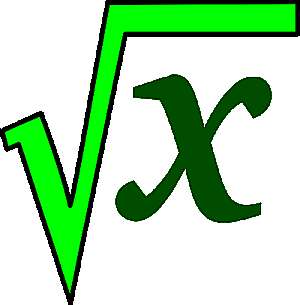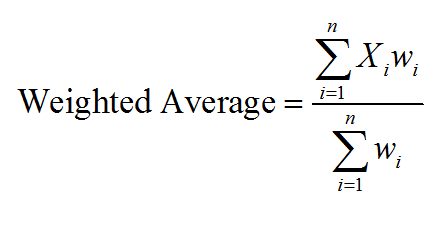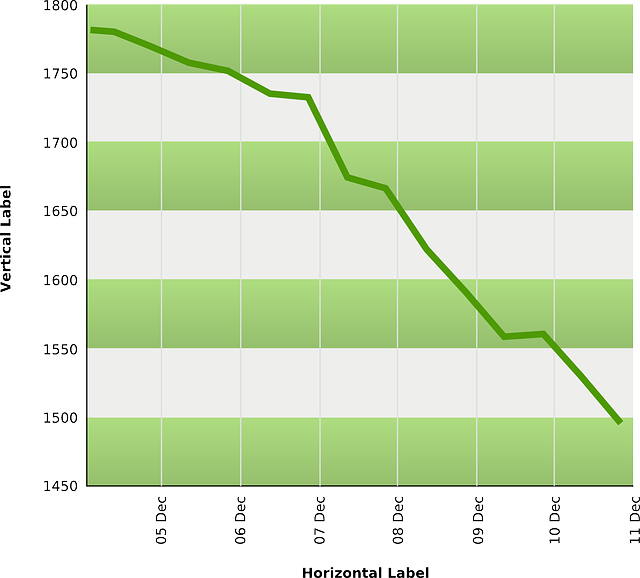Square Root Calculator
Instructions: Use this square root calculator to reduce and calculate any expression involving roots/radicals, showing all the steps. Please type in the square root expression you want to simplify.
More about this square root calculator
This calculator allows to simplify and calculate any valid square root expression, showing all the steps. You need to provide a valid expression involving radicals. For example, it could be something like 'sqrt(1/2 + 1/3)', or something more complex like 'sqrt((1/3+1/4)/(1/3+1/5))'.
Once you provide a valid expression involving square roots, all you need to do is to click on the "Calculate" button, and step-by-step calculations will be provided to you.
Square root expressions usually can be simplified when there are multiplications involved, but often times they are cannot be further simplified. For example, something like \(\sqrt 2 + \sqrt{3}\) cannot be simplified any further, but for something like \(\sqrt 2 \cdot \sqrt{8}\), we can certainly simplify:
\[\sqrt 2 \cdot \sqrt{8} = \sqrt{2 \cdot 8}= \sqrt{16} = 4\]
Square root formula
There are a couple of rules or basic formulas that are needed to simplify radical expressions. These rules are all that are needed to reduce any square root expression, by following the PEMDAS priorities for operations.
How to simplify radicals? This calculator simplifying radicals will first attempt to simplify in the side of the radical expressions as much as possible, and then it will try to reduce the radical expression if possible.
Square Root Simplification Rules
- Rule 1: This is the main rule: \(\sqrt x \cdot \sqrt{y} = \sqrt{x y}\)
- Rule 2: A consequence from the previous rule, but useful to have it as its own rule: \(\sqrt{x \cdot y} = |x|\)
- Rule 3: Another main rule: \(\frac{\sqrt x}{\sqrt{y}} = \sqrt{\frac{x}{y}}\)
We could add more rules to the list, but all of the other ones derive from these ones. When it comes to rules in Algebra, it is best to have a deep understanding of a few rules than having a loose grip of many rules.
How to simplify square roots and radicals?
It is not always possible to simplify square roots, but often times you can do at least some kind of simplification. In general terms, you will use Rule 1 to group (or de-group) expressions under a radical.
And you will use Rule 2 to remove radicals from suitable terms. That is it, that is all you need. The rest is practice.
So then, in simple terms, to calculate square roots you need to work with the terms inside of the root, and by appropriately using the most common radical roots.
What are the steps for simplifying square roots?
- Step 1: Identify the radical expression, and assess whether or not you have one ore more radicals
- Step 2: If you have more than one radical, you can group them that are multiplying each other using Rule 1. You can group them under one radical
- Step 3: If there is a division of radicals, can use Rule 3 to group them under one radical
- Step 4: Once you have used Rule 1 or 3 to group radicals as much as possible, you use Rule 2, so see what part of the expression can be taken out of the radical
Ultimately, the game is group and potential "cancel" the radical from a portion of the expression (if not all) numerator by the denominator in the fraction).
What is the square root of 1?
There are several ways of seeing that the square root of 1 is equal to 1. One way is by definition: the square number of a given number x is such that when you square you get the given number x.
In this case, the given number is x = 1. Notice that 1² = 1, so then 1 is the square root of 1. Another way to see it is from 1² = 1, we apply square root, so we get \(\sqrt{1} = \sqrt{1^2} = |1| = 1 \), by Rule 2.
Square root Calculator Fractions
The question is, can I use the same rules for a square root calculator for fractions? The answer is: absolutely. The idea is exactly the same, group radicals that are multiplying each other, and the potential remove the radical from part of the expression.
When dealing with fractions, the expression will likely be a fraction too, and you will deal with simplifications in the numerator and denominator all the same.

Is this a radical calculator?
Indeed, it is. A radical calculator refers to one that conducts and simplifies operations inside of a radical, which is the same as a root. Now, a square root is a specific type of radical, there are cubic roots, quartic roots, etc, and all of them are radicals.
With this calculator you can compute all sort of radicals, so this a radical solver as well as it is a square root solver, depending on the argument to provide it with.
Why bother simplifying square roots?
It is a fair question, but often times you will actually need to, especially when you need to solve radical equations, or when you need to express a solution of a radical equation, or any equation, in this lowest terms.
Putting a radical expression or any expression in its lowest terms is a crucial skill, as you will use terms and plugging them back into other terms, and without a sufficient simplification strategy, things could easily become unmanageable.

Example: Calculating the square root
Can you simplify the square root of 5.
Solution: First, we see that 5 does not have any factors, and since we have only one radical, with a number without factors then we conclude that \(\sqrt 5\) cannot be further simplified.
Example: Simplifying radicals
Can you simplify the square root of 25.
Solution: In this case, \(25 = 5^2\), so using Rule 2:
\[\sqrt{25} = \sqrt{5^2} = |5| = 5\]which concludes the calculation.
Example: Square root simplification
Can you simplify the square root of 10.
Solution: First, we see that 10 does have factors, since \(10 = 2 \cdot 5\) and since we have only one radical, we can write \(\sqrt{10} = \sqrt{5 \cdot 2}\), but that is not a simplification but an expansion. Neither 5 nor 2 have factors nor they can be written as a square to apply Rule 2, which indicates that we cannot simplify this expression any further.
Example: Square root calculation
Calculate the square root of 300.
Solution:In this case, \(300 = 3 \cdot 100 = 3 \cdot 10^2\), so using Rules 1 and 2:
\[\sqrt{300} = \sqrt{3 \cdot 10^2} = \sqrt{3} \cdot \sqrt{10^2} = 10 \sqrt 3\]which concludes the calculation.
Other useful algebra calculators
In case you need to work in a more general setting, you can use this expression simplifier, that will handle general expressions, and will be you general simplify calculator with steps.
For fractions, you can use our mixed fraction calculator, or a regular fraction calculator, but it will depend on what you need to compute.



